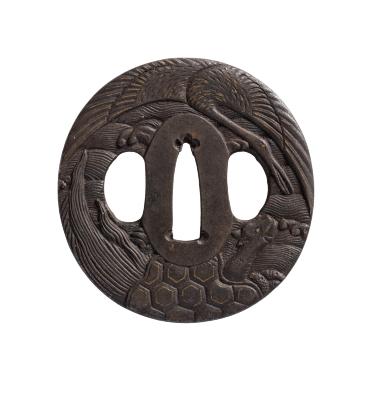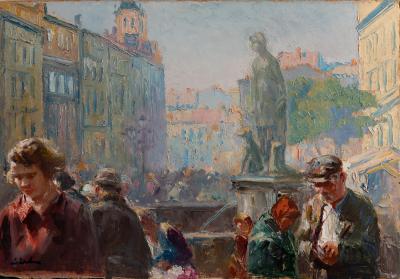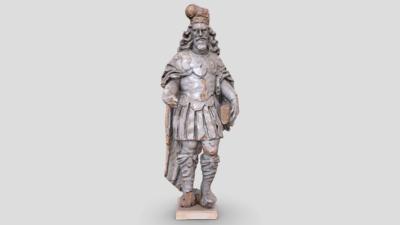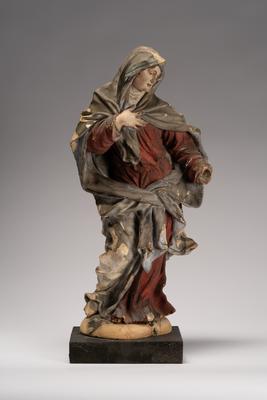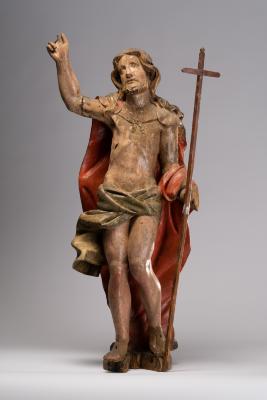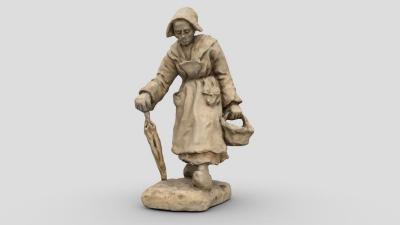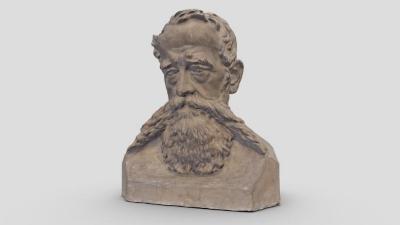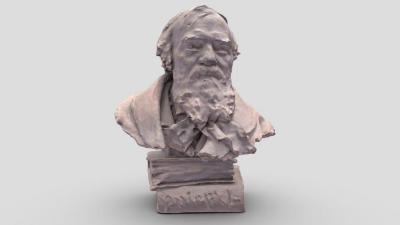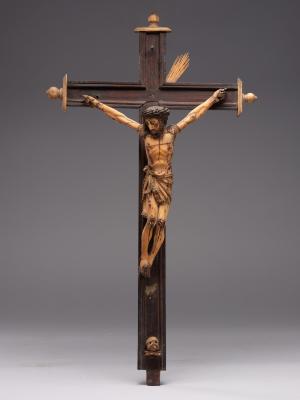The work is made in bright and contrasting colors. The plowman dressed in white clothes and a yellow hat follows a plow pulled by a red horse. There is a purple arable strip underneath them. Further from them, the painter depicted a pond with dark green water, on the shore of which a tree grows. Mykhailo Boichuk often used plant elements in his other works, appealing to an ancient ornamentalism. A grey sky with barely purple clouds stretched over the figures. In the foreground, there is also a sketch of the second knee-length figure of a horse, which is depicted pulling something tensely with its head lowered. This horse is painted in dark ocher colors and is shown on a green background. On the back of the work, there is a pencil sketch of the male figure and ornament.






